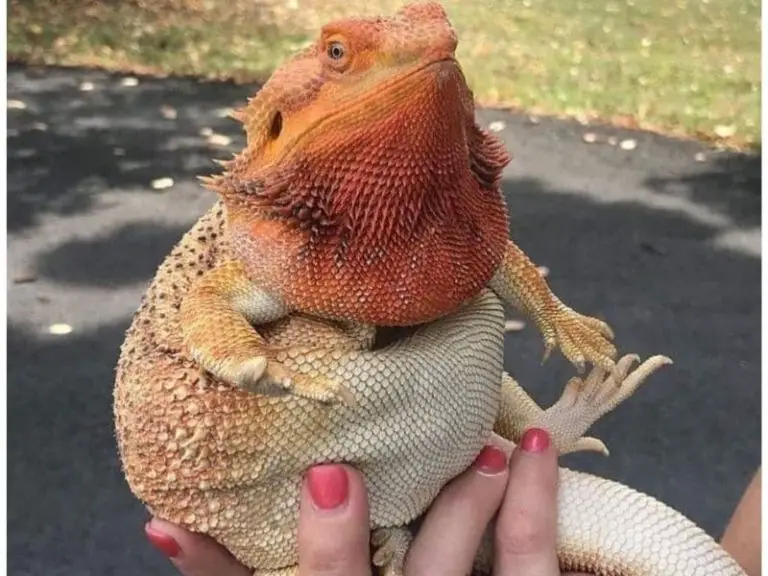How Cold Can Bearded Dragons Get At Night
Bearded dragons are fascinating creatures that are commonly kept as pets. However, as with any animal, it is essential to take proper care of them to ensure their health and wellbeing. One crucial aspect of care is understanding how cold bearded dragons can get at night.
Pain Points of Cold Bearded Dragons
Bearded dragons are cold-blooded reptiles that depend on external heat sources to regulate their body temperature. Exposing them to low temperatures can be detrimental to their health and cause various health issues.
However, many pet owners are unaware of the dangers of exposing their bearded dragons to cold temperatures at night. This lack of knowledge can result in several pain points for both the animal and the owner, including:
- Illnesses
- Stress
- Loss of appetite
- Sluggishness
- Death
How Cold Can Bearded Dragons Get at Night?
It is crucial to understand the minimum temperature that a bearded dragon requires to maintain its health at night. At night, the temperature in their environment should not fall below 65°F (18°C). Anything lower than that can expose them to hypothermia, a condition in which their body temperature drops below the required range, leading to various health issues.
As an owner, it is essential to monitor the temperature in your bearded dragon's environment to ensure that it stays within the acceptable range.
Main Points to Consider
So, in summary, bearded dragons are cold-blooded reptiles that require an external heat source to survive. At night, the temperature in their environment should not drop below 65°F (18°C) to maintain their health. As an owner, it is critical to monitor and regulate the temperature in their environment to prevent any adverse effects on their health.
My Personal Experience with Cold Bearded Dragons
As a pet owner for several years, I have learned the importance of maintaining proper temperature regulation for bearded dragons. One winter, I made the mistake of not regulating the temperature in my pet's environment properly, causing it to fall sick. I learned the hard way that neglecting this aspect of care could have severe consequences for the animal, and I have never made the same mistake again.
That experience made me realize how crucial it is to educate yourself about proper care and maintenance of your pets, especially when it comes to bearded dragons.
Maintaining the Temperature in Your Bearded Dragon's Environment
Regulating the temperature in your pet's environment is critical to ensure its health and wellbeing. You can do this by:
- Investing in a thermometer to monitor the temperature in their environment.
- Providing a heat source, such as a heat lamp or ceramic heater, that can maintain the required temperature range.
- Checking and regulating the temperature regularly to ensure it stays within the acceptable range.
What to do if Your Bearded Dragon is Exposed to Cold Temperatures?
If your bearded dragon has been exposed to cold temperatures, it is essential to take immediate action to prevent any adverse effects on its health. You can:
- Move the animal to a warmer area or provide a heat source to raise the temperature.
- Monitor the animal's behavior to check for any signs of illness or lethargy.
- If necessary, seek veterinary care to prevent any further complications.
Frequently Asked Questions
Q: Can bearded dragons get too cold?
A: Yes, bearded dragons can get too cold. They require a minimum temperature of 65°F (18°C) at night to maintain their health and wellbeing.
Q: What are the consequences of exposing bearded dragons to cold temperatures?
A: Exposing bearded dragons to cold temperatures can result in illnesses, stress, loss of appetite, sluggishness, and, in severe cases, death.
Q: How can I maintain the temperature in my bearded dragon's environment?
A: To maintain the temperature in your bearded dragon's environment, you can invest in a thermometer, provide a heat source, such as a heat lamp or ceramic heater, and regularly check and regulate the temperature to ensure it stays within the acceptable range.
Q: What should I do if my bearded dragon is exposed to cold temperatures?
A: If your bearded dragon is exposed to cold temperatures, you should move the animal to a warmer area or provide a heat source, monitor its behavior, and seek veterinary care if necessary.
Conclusion
Understanding how cold bearded dragons can get at night is essential for any pet owner. Providing your pet with the correct temperature range is crucial to ensure its health and wellbeing. By monitoring and regulating the temperature in your pet's environment, you can prevent any adverse effects on its health and enjoy a happy and healthy companion.
Gallery
Can Bearded Dragons Get High? (Read This First!) - Reptile Maniac

Photo Credit by: bing.com / bearded
Overweight Bearded Dragon - Signs And Weight Loss Tips | Being Reptiles

Photo Credit by: bing.com / overweight reptiles
How Often Should You Change A Bearded Dragons Water?

Photo Credit by: bing.com / terrarium blueberries totalbeardeddragon
What Happens If A Bearded Dragon Gets Too Cold? (+ Symptoms)

Photo Credit by: bing.com / happens beardy oddlycutepets
How Cold Can Bearded Dragons Get At Night? New

Photo Credit by: bing.com /